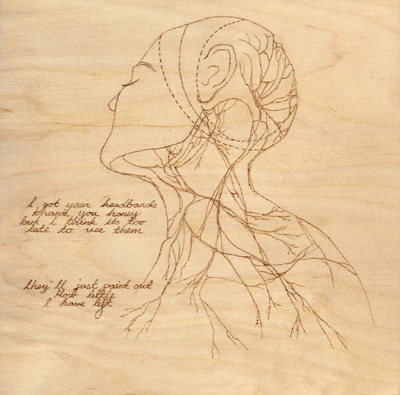Last spring, as I was preparing for my final week of classes, I found out my mother had been diagnosed with breast cancer. (That’s us on the screen) I remember the phone call, when she first told me that during a routine mammogram the doctors had found a lump. She had already suffered through two bouts of skin cancer; once, before I was born, and then during spring of my junior year, she was diagnosed with basel cell carcinoma. So after going through all of this, I remember thinking there was no way my mom could be diagnosed with cancer again. She had already paid her dues, in my mind, and surely lightning wouldn’t strike twice. But they biopsied the lump in her breast and, sure enough, it was cancerous. Luckily they had found it early on, they assured us, which was exactly what they had said about the skin cancer. It seemed to me that the available treatments were pretty brutal no matter how early on it was caught, but I was grateful none the less that it hadn’t grown any larger unnoticed.
So over the summer, my mom had two surgeries; one was a lumpectomy, or “partial mastectomy”, of her breast, and another was the removal of a lymph node from under her arm on the same side to biopsy in case of lymphoma. My family had been planning a trip to China for over a year, and despite being in recovery my mom decided to come with us overseas just a few weeks after surgery. My father is a professor and was invited to tour the labs of various universities in China, and we were lucky enough to be able to come along. While he was on campuses, my mom and I visited Buddhist temples and prayed for her recovery. I was fascinated by the Guan-yin, or female guardian figures, I saw in various Chinese artifacts, and initially planned to do my thesis work on the significance of Goddess imagery in East Asian religions. However, when I returned to the states and my mom started chemotherapy, I found myself more and more drawn to her story. At my professor’s suggestion, I began keeping a diary of her progress, our phone calls, bits of conversations and sketches (which are the slides you see now). I found that my initial ideas about exploring femininity, sexuality and power in the context of Goddess archetypes became the subtext of my project, no longer explicitly a visual part of my work but a more nuanced way of expressing the same ideas. The daily frustrations I catalogued in my sketchbook seemed mundane at first, but eventually fueled a visual exploration I had not yet arrived at. To be honest, beginning the semester this was way difficult for me since I saw so many of my classmates working on concrete ideas they had finalized long ago. But I now think that my open-ended approach yielded much more intimate and unexpected work than I ever could have planned beforehand.
So as I was writing these journal entries I learned more and more about my Mom’s experiences; the side effects of chemotherapy treatments, her struggle with the loss of her hair and appetite, and the reactions of those around her. I found myself engrossed in her story and the more we talked the more I wanted to know. At first the sketches I was doing focused on my environment, and the context for many conversations I had with my mother during her treatment. But these images lacked a certain depth and permanence, so I decided to return to a medium I have loved for years, wood burning. For me the matte, flesh toned wood panels served as a perfect representation of the body, and I began researching old anatomy textbooks and medical illustrations. The lines drawn by dragging a hot knife across the board looked shaky and irritated, and reminded me of a surgeon’s scalpel. The burner leaves a small indents wherever it rests, giving each piece a unique engraved quality. As I was working, my mother’s pain served as a catalyst for my change in direction, and my project became much more focused on the physical and mental effects of cancer treatment. Unexpected symptoms like warped taste buds and blood infections were fascinating to me, and equally as interesting was my Mom’s reaction to them. Exhausted and with waning patience she nonetheless fought with optimism day after day. I would ask “How did radiation go?” and she would say “Great! Now I can glow in the dark!”. I recorded our conversations in my sketchbook and transcribed them on my illustrations, creating a tension between an intimate voice and clinical representations of the body that I thought was powerful. Next semester I hope to continue my work on these panels and display a collection of them accompanied by small risograph booklets to include the entire collection of illustrations that might not fit on a gallery wall. I’m also thinking about using audio clips of interviews and conversations and am open to your input.
In closing, I’d like to share my favorite line from Alexander Pope’s Essay on Man, which is incidentally where my mom got her favorite phrase:
Hope springs eternal in the human breast;
Man never is, but always to be blessed:
The soul, uneasy and confined from home,
Rests and expatiates in a life to come.
